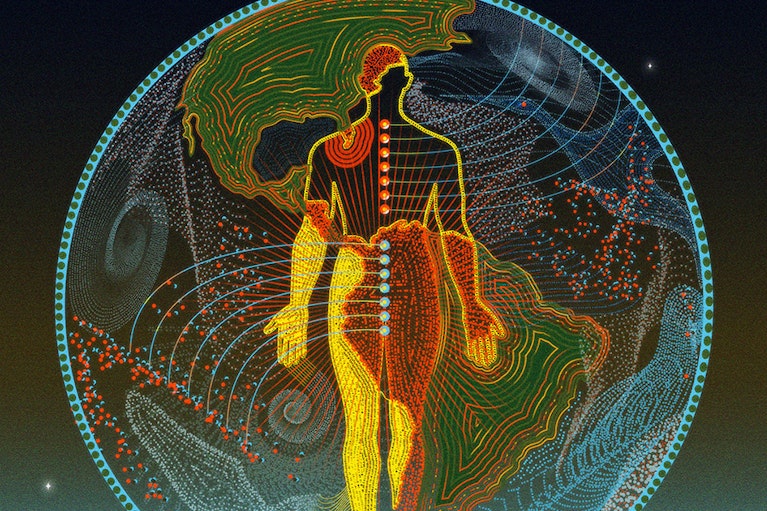Nathan Gardels is the editor-in-chief of Noema Magazine. He is also the co-founder of and a senior adviser to the Berggruen Institute.
It might seem strange to be writing about forests and fires on the eve of one of the most momentous elections in American history. But of all the challenges facing democratic societies today, from unsustainable inequality to getting the present pandemic under control, the most consequential, even existential, is climate change. While the electoral cycle turns slowly every so many years, the clock is ticking as the planet accelerates toward a point of no return. Without a new politics that urgently addresses this challenge, it may well be too late.
Some enlightened political figures of the new generation who lately arrived on the scene get this. In a Foreign Policy webinar this week, Pete Buttigieg, a once and perhaps future presidential candidate, laid out a vision that departs from the now faded preoccupations of the past. As Buttigieg sees it, we have already left the post-World War II, post-Cold War and even 9/11 set of concerns — and are entering a new era in which health security, cybersecurity and, above all, climate security, are the core agenda. The next world order will be built on this basis, and the time to start is now. Needless to say, a new face in the White House and new faces among the U.S. Senate will determine whether politics can speed up or if the clock will tick without us.
For Buttigieg, climate politics is a unifying, not divisive, endeavor. It responds to both the top generational concern of alarmed youth at home as well as security issues at the planetary level. It offers the most solid bridge of cooperation despite conflicts with the other major world power, China. And despite partisan blockages within the political system, there is a clear consensus among the vast majority of Americans that the devastating wildfires and ever-more virulent storms that afflict their communities require action sooner rather than later. Such a convergent moment, says Buttigieg, opens the way for pragmatic solutions that are in actuality bold in their capacity to break through polarization and confrontation.
While “Mayor Pete” prepares for battle on the political barricades, Christopher Benz offers his first-person perspective as a wildfire fighter on the front lines of climate change. “For me,” he writes in Noema this week, “global warming starts with an ember.” He chronicles his experience from helicopter drops to strategic lines of defense, as if from a war zone, to the endless “hiking and digging” amid intensive heat involved in getting fires across the Western U.S. under control.
Benz reflects on how the fiery catastrophe on the ground starts in the warming atmosphere. “We’re seeing more intense and longer droughts, stronger winds and hotter temperatures,” he says, noting a recent study that showed how the fire season in western North America is 84 days longer now than it was in the 1970s. Since the 1970s, he further reports, “the burned acreage in the Pacific Northwest has increased by 5,000%. Fourteen of the hottest 15 summers have occurred since 2000. In only nine days this summer in California, fire burned more than three times what it does on average in an entire season. Fires consume larger swaths of forests worldwide, even in equatorial Africa, which does not have North America’s history of systematic fire suppression (and subsequent accumulation of underbrush).”
What worries Benz most is that global warming is stripping forests of their own natural defenses.
“Climate conditions migrate past forests, stranding trees in fire circumstances they didn’t evolve to thrive in. They are left weakened, dry and dense. Evolutionarily speaking, the role of fire is to clear the unfit. And the hotter it gets, the fewer trees are fit.”
Devastated forests, in turn, deprive the planet as a whole of the carbon-absorbing sinks that stabilize the climate, one self-reinforcing cascade among others, including the melting polar icecaps, that accelerates warming.
One of the largest carbon sinks in North America is the Tongass rainforest in Alaska, which today is under threat not only from climate change, but from chainsaws the Trump administration has unleashed in what could be its waning days.
As Noema senior editor Peter Mellgard reports form Point Baker, Alaska: “In worrying ways, the entire forest seems to be dying because of climate change, and at a faster rate compared to the rest of the world. Warmer and drier conditions are causing a vast die-off of yellow cedar, one of the first species identified anywhere on the planet whose widespread (and decades-long) decline is directly attributable to a warming climate. Hemlock, the most prevalent tree in the region and an important timber species, is threatened with an infestation of sawfly, whose larvae feed on its needles. Large and destructive forest fires are not common in the Alaskan rainforest, but as the summers get warmer and drier and the trees continue to die, they soon may be.”
Hope rests in those who see human stewardship of the forests as a key to sustaining the natural order. In his story, Mellgard profiles the resistance in Alaska taking a “last stand” against deforestation.
Paradoxically, the outsized technological prowess of the human species in this Anthropocene Age that fomented the climate crisis may also be one way out.
The French philosopher Bruno Latour sees a new “self-awareness” that we are embedded in nature as the new element in how the planet can maintain climate equilibrium. “Deliberate self-regulation — from personal action to global geoengineering schemes — is either happening or imminently possible,” he recently wrote with his colleague Timothy Lenton. “Making such conscious choices to operate within Gaia constitutes a fundamental new state of Gaia, which we call Gaia 2.0. By emphasizing the agency of lifeforms and their ability to set goals, Gaia 2.0 may be an effective framework for fostering global sustainability.” In short, human agency can do as much to save the planet as doom it.
For example, the vast data capacities of the digital age can guide human intervention in stabilizing the climate through a network of sensors that signal danger in the same way as natural feedback mechanisms would do on CO2 levels in the ocean or the pace of melting glaciers. Those same capacities can provide an ongoing audit of the global use of resources to aid the design of systems that mimic nature’s own pattern of end-to-end production and recycling.
As Latour critically notes, however, whether and how such scientific and technological advances are deployed within the Gaia framework depends on the political will to do so.
That brings us back to how democracy and the fate of the forests are inextricably linked. Only if we govern ourselves in the awareness that we are only part of the whole of nature — “responsible stakeholders,” to borrow a term from geopolitics — will it be possible to repair the damage we’ve already done and sustain a flourishing habitat for the future. That is the most profound challenge to the very conditions of their existence that modern democratic societies have ever faced. The good news is that next generation leaders like Buttigieg see taking up this challenge as the best chance of unifying politics and forging a governing consensus in the era ahead.






